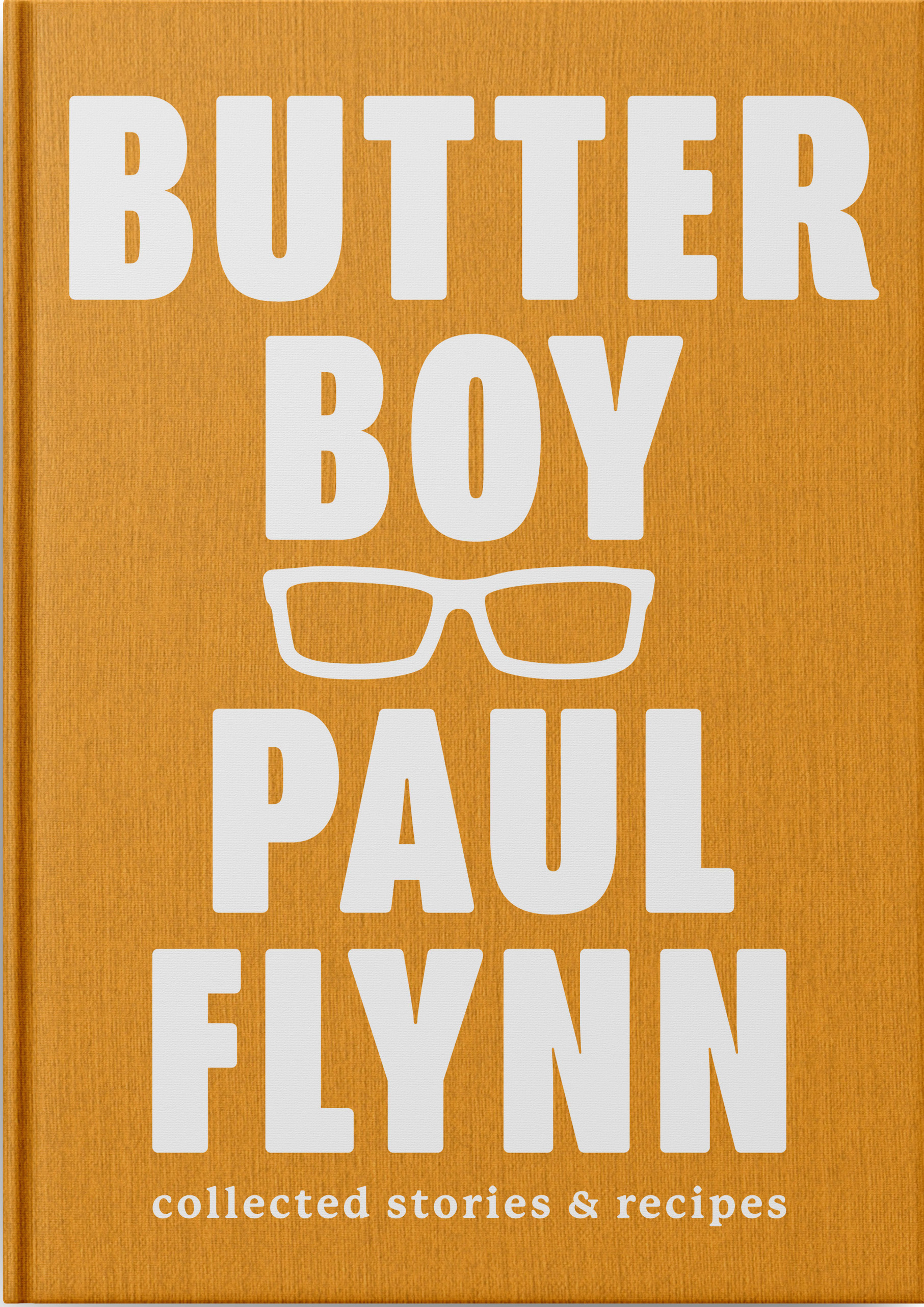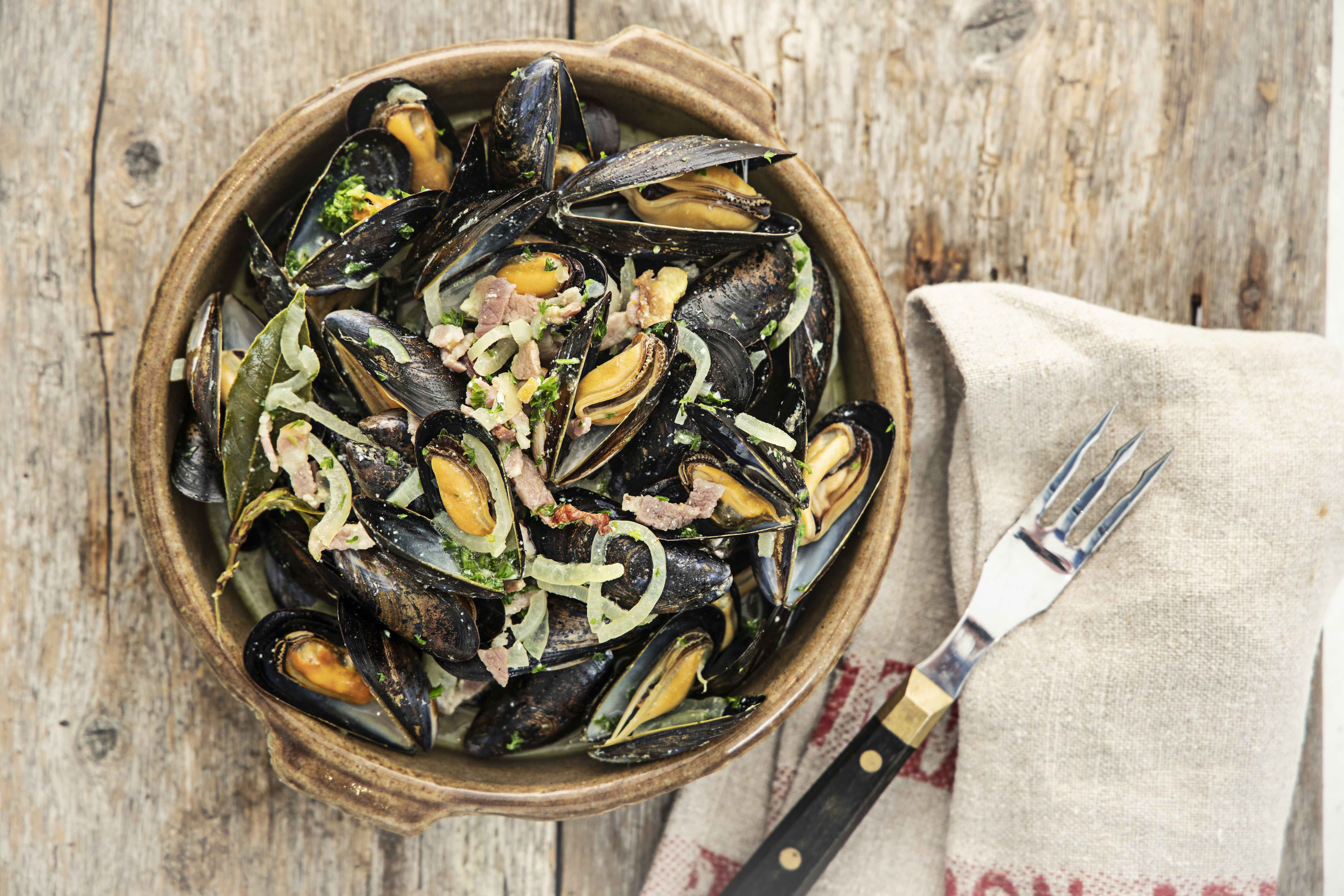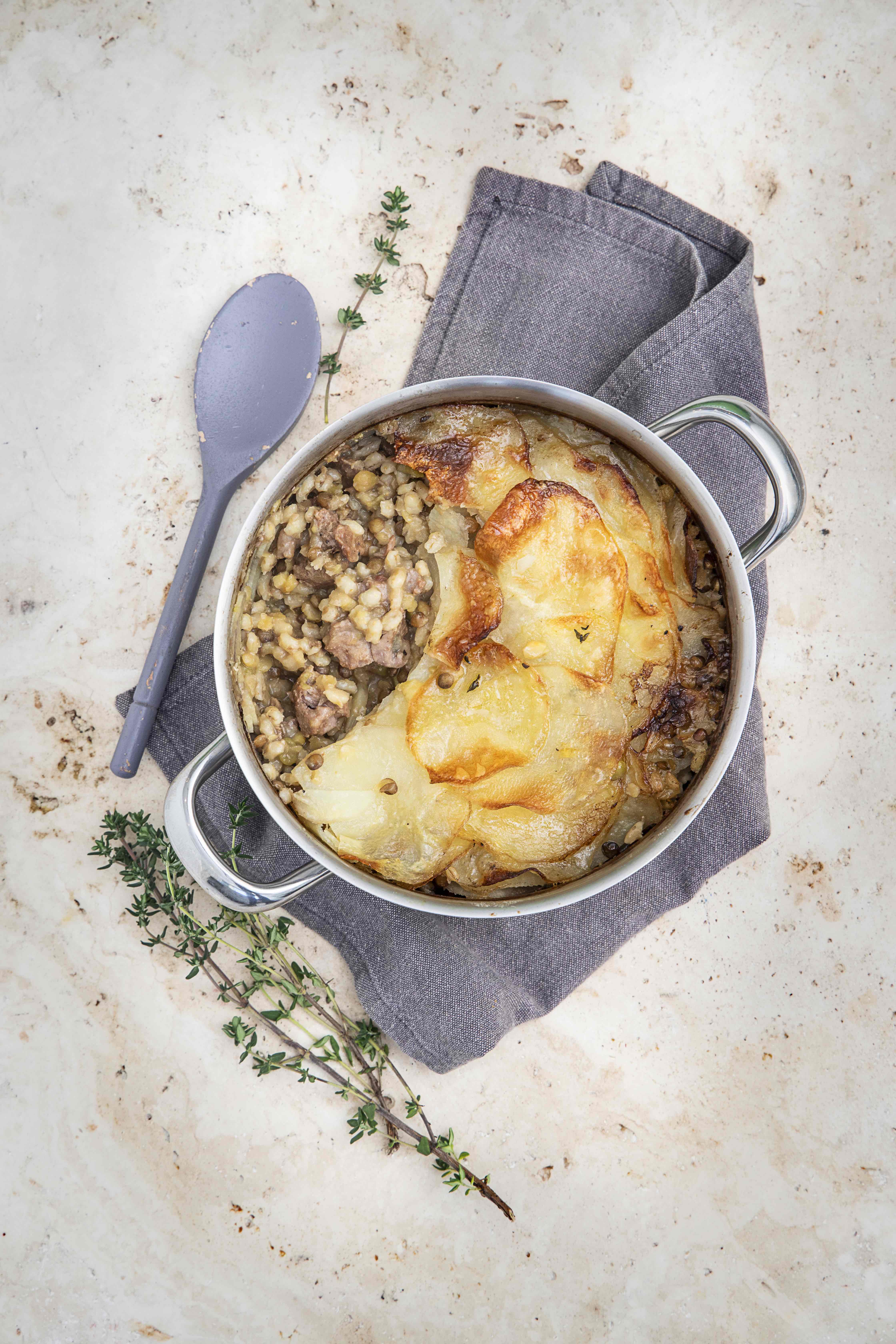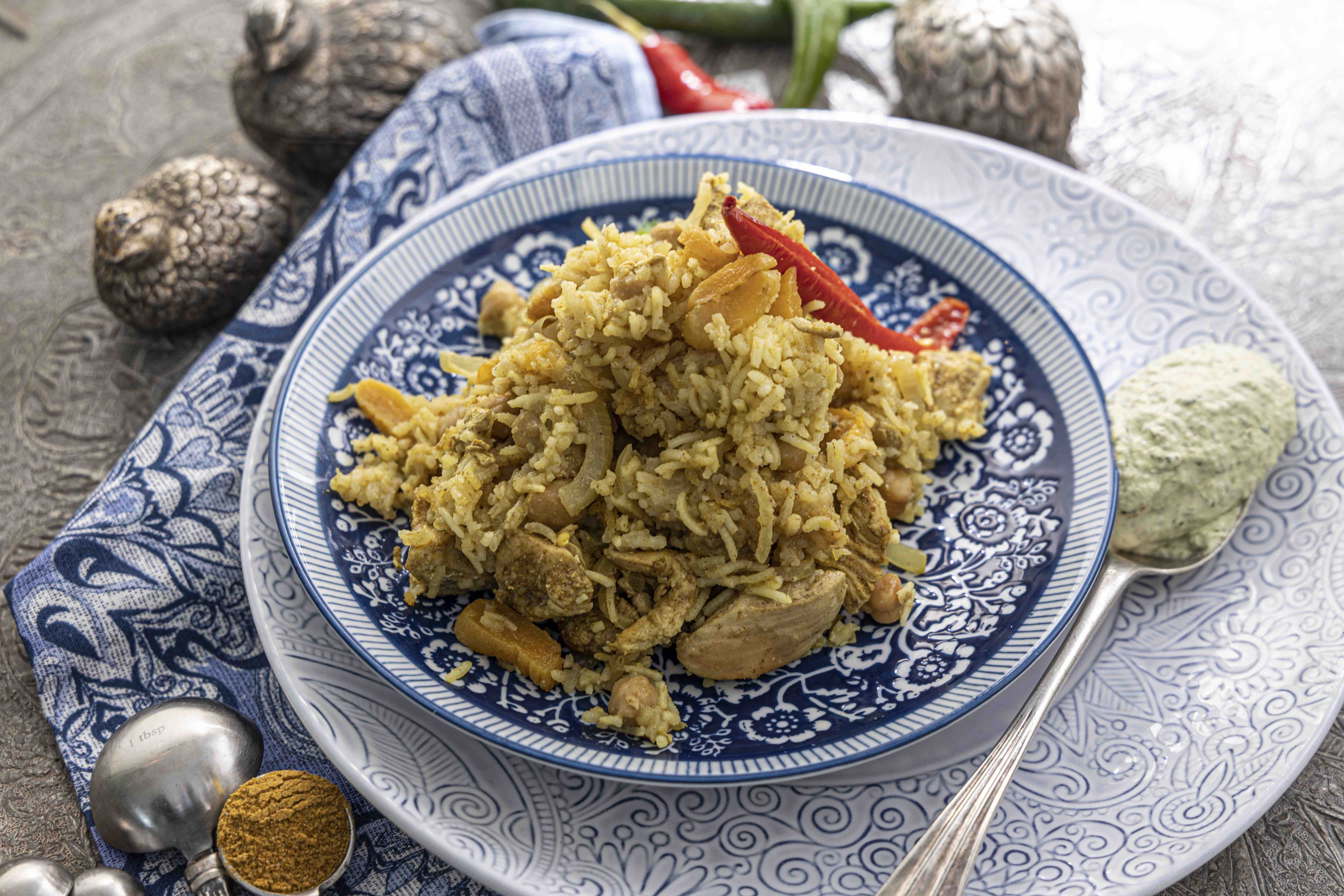Cookery Feature - Butter Boy
 Butter Boy is not Paul Flynn’s first cookbook – in fact it is his fifth – but when this lovely big yellow door stopper of a book landed on my desk it took me straight back to 1995, and the early years of the Egon Ronay’s Ireland Guide when Paul was leading the kitchen team at Dublin’s wonderful La Stampa, the Guide’s Restaurant of the Year. The citation referred to it as ‘ a breath of fresh air’, ‘a hugely enjoyable experience’, ‘real value for money’ and to ‘the wish to return’ – all of which could equally apply to The Tannery, which Paul and Maire Flynn bravely left Dublin to establish in Dungarvan just two years later, in 1997. Which, as it happened, was also the year when Egon Ronay’s Guides (Britain and Ireland) suddenly went quiet, in a closure very similar to the demise of The Irish Press group – to be replaced, in Ireland, by GCGuides. In the more detailed main entry, readers were urged to scrutinise Paul’s monthly-changing menus carefully for their ‘eclectic mix of dishes’ with ‘lobster bisque sitting happily alongside Thai crab risotto and perhaps goats cheese pizza, escalope of veal milanaise or daube of beef with cabbage, bacon, bacon, carrots and mash’ and the ‘good local cheeses’ named included Cooleeny and Gubbeen…
Butter Boy is not Paul Flynn’s first cookbook – in fact it is his fifth – but when this lovely big yellow door stopper of a book landed on my desk it took me straight back to 1995, and the early years of the Egon Ronay’s Ireland Guide when Paul was leading the kitchen team at Dublin’s wonderful La Stampa, the Guide’s Restaurant of the Year. The citation referred to it as ‘ a breath of fresh air’, ‘a hugely enjoyable experience’, ‘real value for money’ and to ‘the wish to return’ – all of which could equally apply to The Tannery, which Paul and Maire Flynn bravely left Dublin to establish in Dungarvan just two years later, in 1997. Which, as it happened, was also the year when Egon Ronay’s Guides (Britain and Ireland) suddenly went quiet, in a closure very similar to the demise of The Irish Press group – to be replaced, in Ireland, by GCGuides. In the more detailed main entry, readers were urged to scrutinise Paul’s monthly-changing menus carefully for their ‘eclectic mix of dishes’ with ‘lobster bisque sitting happily alongside Thai crab risotto and perhaps goats cheese pizza, escalope of veal milanaise or daube of beef with cabbage, bacon, bacon, carrots and mash’ and the ‘good local cheeses’ named included Cooleeny and Gubbeen…
 So, here we are nearly three decades later and plus ca change…With the arrival of Butter Boy, we hear that ‘Paul’s passion for contemporary cooking while championing traditional Irish ingredients is apparent in his fun Turnip Tortilla and Posh Bacon and Cabbage or Steamed Mussels with Cidona, Curry Spice and Crème Fraîche’, and that ‘Summer recipes are inspired by Paul's travel’. Much has changed along the way of course, not least that Paul is now a household name, famed for his Irish Times columns (2000–2004 and 2019–2022), TV programmes such as Lords and Ladles and Paul Flynn’s Food Truck Favourites - and, of course, the very successful Tannery Cookery School. But the fundamentals remain the same, with great seasonal Irish produce used in a wide range of dishes that, he says, have been kept ‘uncomplicated, seasonal and family-oriented’. But equally importantly Butter Boy is a just a great read and nobody could argue with the press release statement that ‘Even if you never cook any of the dishes, you’ll certainly enjoy the journey Paul takes his readers on’.
So, here we are nearly three decades later and plus ca change…With the arrival of Butter Boy, we hear that ‘Paul’s passion for contemporary cooking while championing traditional Irish ingredients is apparent in his fun Turnip Tortilla and Posh Bacon and Cabbage or Steamed Mussels with Cidona, Curry Spice and Crème Fraîche’, and that ‘Summer recipes are inspired by Paul's travel’. Much has changed along the way of course, not least that Paul is now a household name, famed for his Irish Times columns (2000–2004 and 2019–2022), TV programmes such as Lords and Ladles and Paul Flynn’s Food Truck Favourites - and, of course, the very successful Tannery Cookery School. But the fundamentals remain the same, with great seasonal Irish produce used in a wide range of dishes that, he says, have been kept ‘uncomplicated, seasonal and family-oriented’. But equally importantly Butter Boy is a just a great read and nobody could argue with the press release statement that ‘Even if you never cook any of the dishes, you’ll certainly enjoy the journey Paul takes his readers on’.
And rarely has context been so important for a cookery book - Butter Boy is the complete Irish Times collection of all of Paul’s 152 articles and over 450 recipes from three very unusual years, November 2019 to October 2022, ‘a time when cooking and mealtimes took on new meaning’, and his record of this time through food (and stories) not only resonates for all of us now, but its importance as a record will grow as the pandemic becomes a distant memory. The calendar sequence with the dates of the original articles is also very practical and makes the seasonality very natural and easy to reference. At one point Paul describes in detail how the Irish Times features were put together, including Maire’s editing role - which was mainly to get Paul’s text down to the right word count but there is a sense that she also put manners on his occasional (entertaining) rants too. And it should be noted that Harry Weir’s photographs for The Irish Times articles (as in samples below) do not feature in Butter Boy, which already runs to over 700 pages without illustrations. Readers of the Insta generation may possibly find that strange, but for the rest of us it’s a nice reminder of the days when cookery books had little more than a few line drawings or a little cluster of photos in the section breaks and reading them stimulated the imagination as much as the appetite.
Published by boutique Irish publishing house Nine Bean Rows (itself a sensation), Butter Boy is set to become a classic.
Keep up to date with the latest news by following Paul Flynn on social at @paulflynnchef and @thetanneryrestaurant
SAMPLE RECIPES
Butter Boy: Collected Stories and Recipes by Paul Flynn is published by Nine Bean Rows, price €40; available from ninebeanrowsbooks.com and all good bookshops, as well as independent retailers around Ireland.
 Steamed mussels
Steamed mussels
Steamed mussels with cidona, curry spice and crème fraîche
Serves 2
This dish is a little controversial because I put Cidona in my mussels. So should you. It was inspired by Normandy, where they pair mussels with cider so beautifully. I’ve added crème fraîche to temper the sweetness of the Cidona.
1kg mussels
50g butter
1 small onion, sliced
125g smoked bacon lardons
2 bay leaves (fresh if possible)
½ tsp curry powder
200ml Cidona
2 tbsp crème fraîche
chopped fresh parsley
• To prepare the mussels, immerse them in a clean sink of cold water. Agitate. Debeard them one by one into a clean bowl, discarding any that are open and won’t close when you gently tap them on the counter. Drain and clean the sink, fill it with cold water again and re-immerse the debearded mussels. Agitate the mussels once more, then lift them from the water, leaving any sediment behind.
• Melt the butter in a large saucepan over a medium heat. When the butter starts to foam, add the onion, bacon and bay leaves and cook for 10 minutes, until the onion has softened. Add the curry powder and cook for 1 minute before adding the mussels and Cidona.
• Cover the pan and bring to the boil. Cook for 2–3 minutes over a high heat, until all the mussels are open, stirring just once along the way. Do not overcook or the mussels will be tough and rubbery. Discard any that remain closed.
• Remove the pan from the heat, then stir in the crème fraîche and parsley.
• Serve straightaway with crusty bread.
 Flynny’s lamb hotpot
Flynny’s lamb hotpot
Serves 4
350g diced lamb shoulder
3 tbsp country relish
1 tbsp prepared English mustard
a few sprigs of fresh thyme
200g broth mix (widely available in supermarkets in the health food aisle – a mix of barley, lentils and split peas)
400ml water
400ml cider (optional but nice – replace with water if you don’t have it)
1 chicken stock cube
5 medium Rooster potatoes, peeled and thinly sliced
a knob of butter
3 bay leaves (fresh if possible)
1 cinnamon stick
• Preheat the oven to 160°C.
• Put the lamb in the bottom of a medium-sized pot or casserole with high sides. Add the relish, mustard and thyme, season with salt and pepper and mix well. Sprinkle the broth mix evenly over the top.
• Pour the water and cider into another pot, add the chicken stock cube and a little salt and pepper. Bring to a simmer briefly, whisking to dissolve the stock cube.
• Cover the lamb and broth mix by overlapping the sliced potatoes on top. They should make two layers or so. Pour the cider stock gently over the top – your potatoes will be immersed, but don’t worry. Dot butter over the top of the spuds, then intersperse the bay leaves and cinnamon stick with the potatoes.
• Cover the pot or casserole tightly with a lid or foil and cook in the oven for 1 hour 15 minutes. Turn the heat up to 190°C. Remove the lid or foil and cook for 25 more minutes, until the potatoes are golden and crisp.
• This would be lovely with a generous blob of redcurrant jelly and a crisp green salad.
 Coronation chicken
Coronation chicken
Coronation chicken rice with lime and coriander cream
Serves 4
50g butter
1 large red onion, thinly sliced
2 garlic cloves, sliced
2 chicken breasts (350g), diced
2 tbsp curry powder
1 x 400g tin of chickpeas, drained and rinsed
300g basmati rice, rinsed
100g dried apricots, sliced
1 fresh red chilli, deseeded and halved lengthways
800ml chicken stock
a pinch of caster sugar
shop-bought crispy onions (optional)
For the cream:
1 x 35g bunch of fresh coriander, roughly chopped (including the stalks)
250ml cream
2 limes – zest of 1 and juice of both
• Preheat the oven to 185°C.
• Melt the butter in an ovenproof saucepan over a gentle heat. When the butter starts to foam, add the onion and garlic and cook gently for 5 minutes. Add the chicken and curry powder and cook for a further 5 minutes, until the onion softens and the chicken colours a little.
• Add the chickpeas, rice, apricots, chilli and seasoning, then stir together. Add the stock and sugar. Bring to a simmer, then cover the pan, transfer it to the oven and cook for 20 minutes.
• Remove the pan from the oven and fork through the rice, then drape a clean tea towel over the pan and replace the lid to form a seal. The cloth will absorb any excess moisture.
• To make the lime and coriander cream, quickly pulse all the ingredients together with a pinch of salt, then chill. Be careful – if you blend too much it will get too thick.
• Serve the rice in warm bowls with the cream drizzled over the top along with a scattering of crispy onions (if using).






There are currently no comments
Leave a comment
Not a member? Register for your free membership now!
Or leave a comment by logging in with: